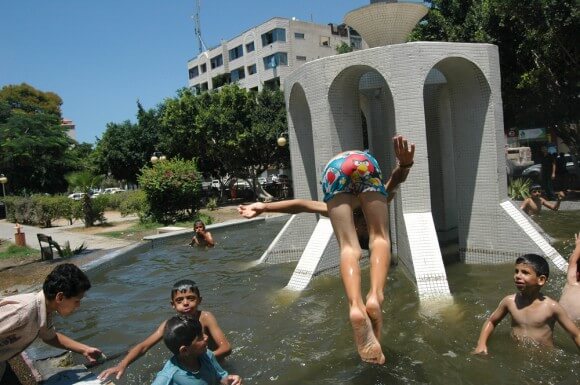
Over the past three and a half weeks Israel’s Operation Protective Edge has sunk Gaza into a besieged land corridor of misery. The civilian casualties have exceeded 1,800, and over 500,000–a quarter of Gaza’s population–are displaced. Although overpowering, the devastation does have brief breaks. During ceasefire hours a semblance of normal life returns.
When I had a chance to visit Gaza, an internationally-lauded lull in fire was underway on July 25 and 26, and I visited a park honoring unknown fallen soldiers in Gaza City that brimmed with the newly homeless and the dislocated enjoying a brief respite. They fled from Shuja’iyeh–the first town blanketed in leaflets from the Israeli army ordering Palestinians to vacate for a ground incursion–and Beit Hanoun, an equally dilapidated community near the Erez Crossing.
Gaza City
Of course ceasefires are not particularly safe as they end abruptly. For some it was a time to finally reach their homes after hours of walking in the summer heat, although often only to discover it had been totally destroyed the night before. And even with the risk of roaming Israeli tanks and ongoing operations to explode tunnels that run under civilian homes, ceasefires offer the only reasonable time when Palestinians can attempt to view their houses abandoned under fire, to swim in a putrid fountain that smells of waste, and to purchase clothing and food. I spoke to many who had not eaten or drunk water for days. For them, a ceasefire meant they could undertake the most basic task of walking to a corner store and filling a tank of water.
“I just came,” said a bewildered Firas, 15, from Shuja’iyeh before cannonballing into a white tiled fountain in Gaza City. Firas is displaced along with his entire family, holed up in a one bedroom apartment that overlooks the green square. He splashed with other children younger than him, all of whom are also living in cramped apartments, or rented spaces in the backs of mini-markets that line the boulevard. When I spoke to him it was the first time in five days that he was able to go outside and enter the cool water 50 meters from his shelter. “It’s good, but the leaves from the trees are bothering me while swimming.”
Nearby, other teenagers heckled Firas who was in the company of a team of elementary schoolers. The boys were rowdy from days indoors, and nights terrified. One youth accidentally dropped his cell phone and when he saw its glass plate had shattered he began to sob.
While the park itself had not been hit, all around it buildings stood with windows blown out and markings from air strikes. Gaza City had become a refugee camp of sorts for those living in the park sheltered by only tree branches, and those with enough cash to pay for a flat.
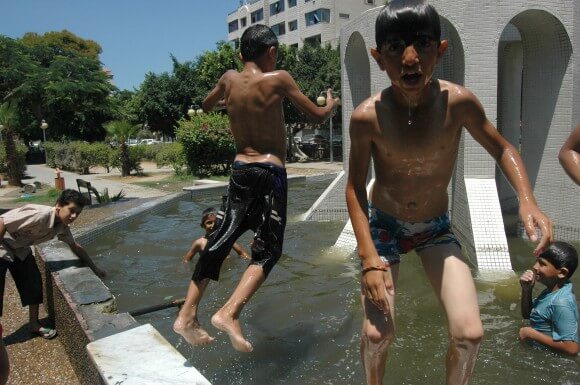
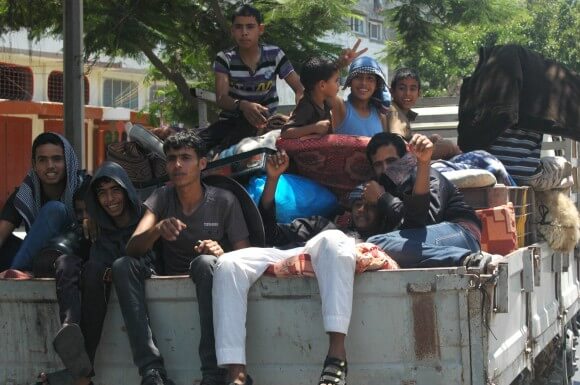
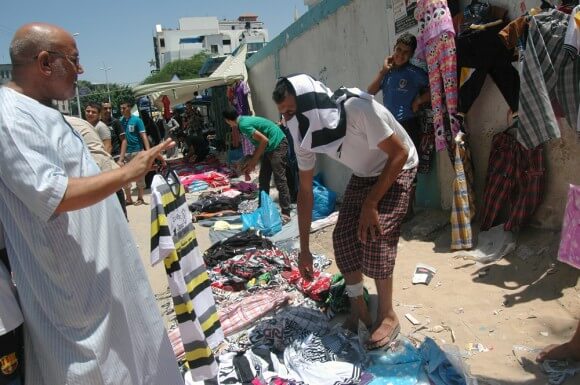
Shuja’iyeh
“This was the only thing left from my house,” said Sadi Faraj, 22, piecing together a “knocker,” an Israeli warning strike armament he found next to where his house once stood. Faraj had walked from Gaza City to see if his home was still standing. It wasn’t. He chatted with Nabil Susouwi, 18, who decided he too would keep the casing of an Israeli missile as the memento. His knocker was the only retrievable object from his former home.
“I will keep this rocket for a memory because this one destroyed my street and everyone around it. That was in the back of my house and the house itself was exploded,” he said.
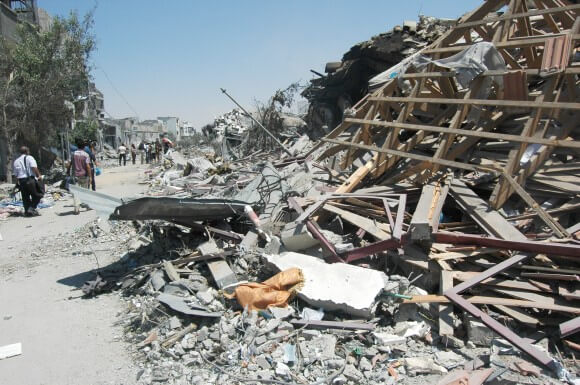
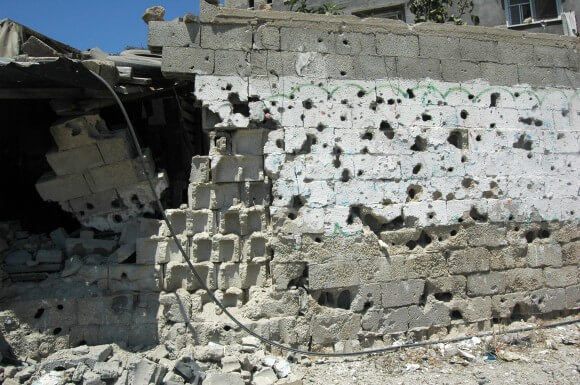

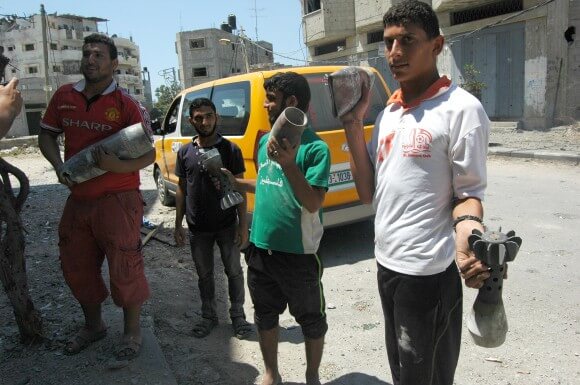

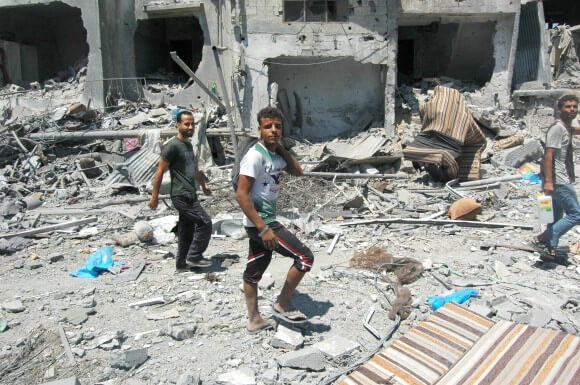
Beit Hanoun
The night before I arrived to Beit Hanoun the town was pounded by Israeli air strikes. F-16’s unloaded fire that seemingly took out the entire city. Dead animals lined the streets and piles of human remains emitted a stench that could only suggest what had occurred for those who did not flee in time. An ambulance lay in charred fragments in front of a bombed out house. One resident said the human flesh soaking the brown earth came from five who were inside of the medical vehicle and the two that came to assist. Those who bunkered in their homes that dreaded night in Beit Hanoun used the ceasefire hours to run with simple belonging or grab rides from donkey carts to evacuate.
Three United Nations shelters have been hit by Israeli fire since the ground operation began, including the one in Beit Hanoun where 19 were killed. Over and over Gazans told me, “there is no safe place,” and aside from my hotel where ten or so Palestinian families had rented rooms, that was more or less the case. These families were not harboring fighters, nor where they part of the political establishment. A number of men told me they had been tradesmen before Israeli’s 2006 blockade cut Gaza’s economic lifelines.
Beit Hanoun, a slightly more rural community where houses have yards and animal shelters, had reverted to its agrarian roots–that is before the Israeli tanks and air fire swept away its livestock and fields. Even the town zoo had been bombed. As I watched families cart off in the direction of Gaza City, I thought of Bosnia, the war footage of my childhood. Sarajevo too was under siege, for years. The residents used an elaborate tunnel system to bring in food–and weapons. Yet the world largely regarded them as an underground system of keeping the population alive with humanitarian items that had no other point of entry.
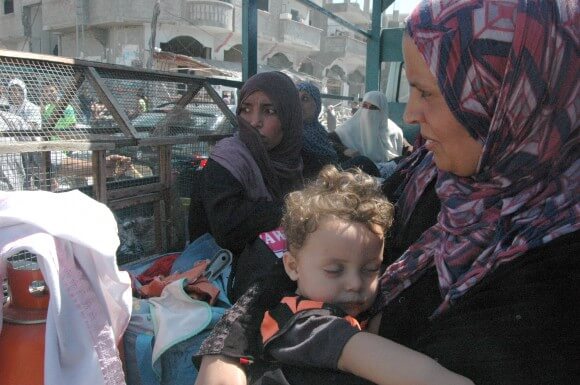
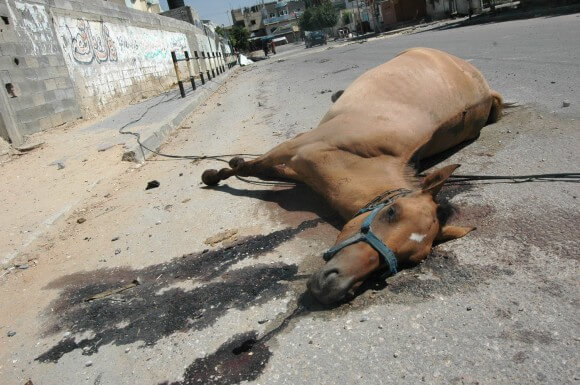



You bearing witness to this is incomparable, and I am so grateful for your words and your photos that capture it so well.
“One youth accidentally dropped his cell phone and when he saw its glass plate had shattered he began to sob.”
This one sentence is almost unearthly.
100 years ago today there was carnage and slaughter on the Western Front as brave British and allied troops gave their lives for our freedom.
100 hours ago, heavily-armed Israeli troops were still killing unarmed civilians in Gaza, like shooting fish in a barrel. There were no brave troops here, only hubris and cowardice as women and children were slaughtered by soldiers heavily armed with American bombs, missiles and high explosive tank shells against a civilian population.
And still David Cameron refuses to condemn the atrocity that has already been labelled a war crime by the UN Secretary General. The British electorate will no doubt note where Mr Cameron’s allegiances lie.
This is a wonderful article. It makes me feel a mixture of sadness and also some heartwarming feelings when I see these poor children being children.
It must be so hard for these true victims of Israeli violence, to go through such horrors, trauma, and fear. How much have they seen we may never know.
This is how their lives should be on a daily basis. It is sad that unlike their neighbors, they are deprived of a decent childhood, and have no basic needs to make their lives as comfortable as they deserve.
Thank you, brave Allison.
You mentioned the siege of Sarajevo. My partner and I visited Croatia in 2008, with a brief visit to Mostar to see the rebuilt Old Bridge. Our tour guide was a lovely girl who had learned much of her English from watching BBC TV programmes, and she would amuse us by quoting lines from British sitcoms. But there was a darker side – she had spent the first few years of her life living in cellars, hardly ever seeing daylight and she told us of her claustrophobia and panic attacks. Seeing your photos of those Palestinian kids, I can only hope they come through as well as Zlata did.
Yes soon the war will be over and the crimes against humanity will buried by the west. :/